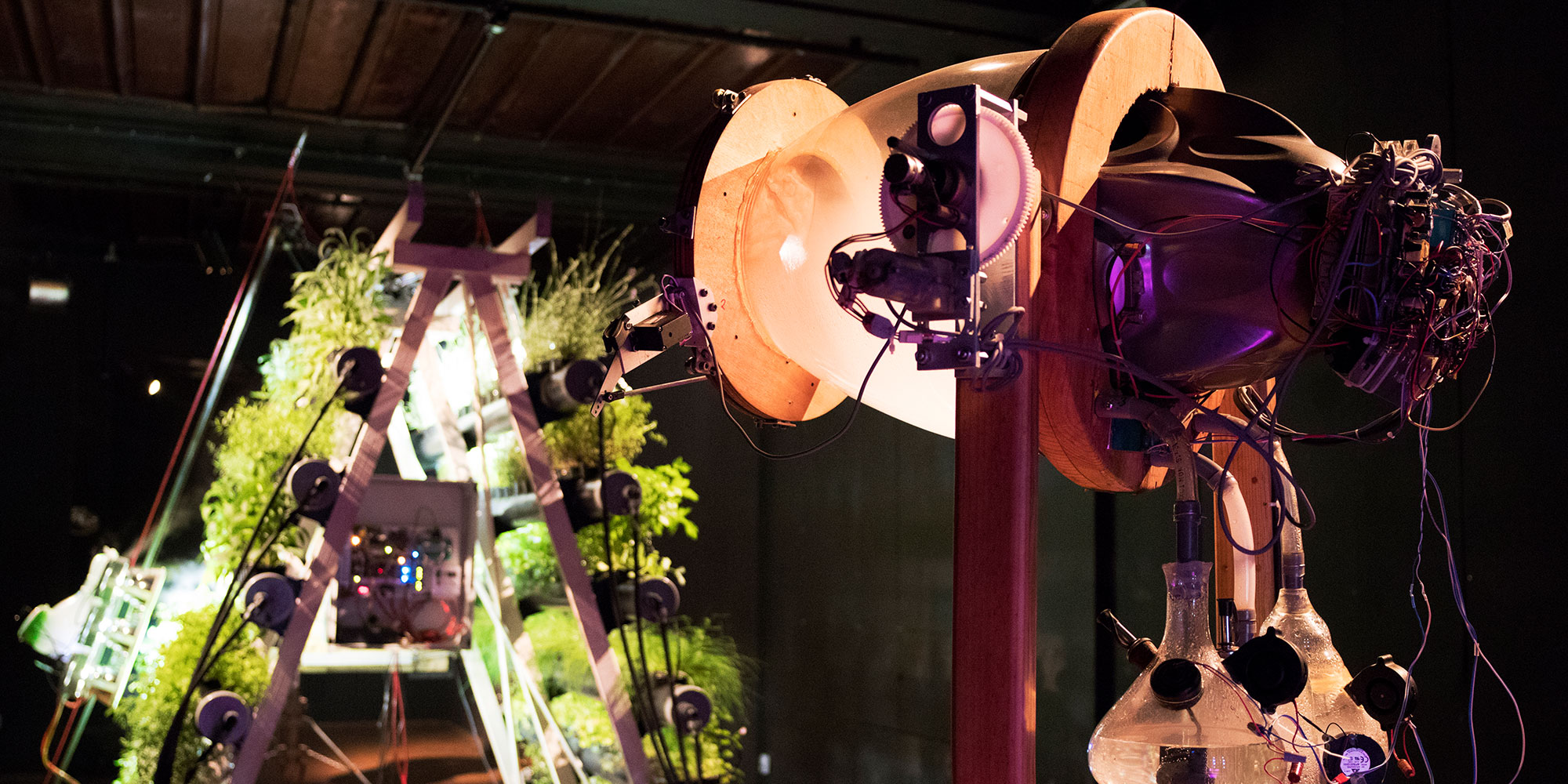„Lasst uns beenden, was wir begonnen haben.“ Auf diese Weise stellt die UNO ihr erstes Ziel für nachhaltige Entwicklung vor – das Ende der Armut in allen Formen und Dimensionen bis 2030. Die 17 Ziele der Nachhaltigen Entwicklung und ihre 169 Teilziele wurden als ein ausuferndes, missverständliches Durcheinander großer Absichten beschrieben. Allein der Titel der Entwicklungsagenda – „Unsere Welt umgestalten“ – verströmt utopische Ambitionen. Er wurde 2015 von 193 Nationen angenommen. Fünf Jahre später und mit zehn verbleibenden Jahren: Wie wird sich unsere Welt verändern?
Wird es in zehn Jahren keine Armut und keinen Hunger in der Welt mehr geben? Wird dieser Planet in zehn Jahren von Milliarden von gesunden und gebildeten Menschen bevölkert sein? Ist Komfort oder Autonomie wichtiger für das Wohlbefinden? Kann man bequem autonom sein?
Diese Fragen wurden WissenschaftlerInnen gestellt, die sich bei einem Open Call zur Zusammenarbeit mit KünstlerInnen im Rahmen der STUDITOPIA-Residency beworben haben. Über einen Zeitraum von fast zwei Jahren werden KünstlerInnen und WissenschaftlerInnen gemeinsam eine kreative Reise unternehmen, die sich mit diesen Fragen befasst und die nachhaltige Entwicklung in ganz Europa durch die konvergierenden Ansichten von Kunst und Wissenschaft erforscht.
Die KünstlerInnen und WissenschaftlerInnen werden ihre Zusammenarbeit beim Ars Electronica Festival mit einer Creative Question Challenge (CQC) beginnen. Das CQC ist ein neues Brainstorming-Format, bei dem Referierende in einem 30-minütigen Dialog kreative Fragen diskutieren und präsentieren.
Video
Projekt Credits
This project is presented in the framework of STUDIOTOPIA and co-funded by the Creative Europe Programme of the European Union.
Biographies
Christiaan Zwanikken (NL)
Christiaan Zwanikken (NL) has received international recognition through his kinetic and mechanical sculptures, sound works, performative and responsive installations. Using a variety of sculptural media, robotics, biology, micro-controllers, and sound— his work is both an artistic and technological experiment in which innovation and invention play an important role.
The substantive basis of the recent work is based on the assumption that human activities causing climate change and the destruction of biodiversity are symptoms of a greater cognitive and phenomenological problem. As technological artifacts proliferate and biodiversity as a living scaffold of life-learning is not comprehended, the role of the sensitive experience of the environment in the development of cognitive and cultural abilities declines. Cut off from the elements of the living world from which human intelligence emerged and on which it had long relied, people are now deprived of a basic intellectual resource. In such circumstances, there is no experiential, conceptual, or representational basis for appreciating the debt which the human mind owes to other forms of life on Earth. Without empathy for biodiversity, it becomes practically impossible to achieve a stable psychological foundation for the kind of sustained ecological commitment needed to solve contemporary environmental crises.
DM Hoyt (US)
DM Hoyt (“Hoyt”) is a creative pragmatist with a methodical mind and a love for brainstorming. Hoyt is also a practicing mechanical and structural engineer who specializes in leveraging the high-performance properties of advanced composite materials to increase fuel efficiency of airplanes and to enable ever-larger wind turbines that increase the amount of renewable energy in the global energy mix.
For the past 20 years he has led a small team of engineers at the company he founded, NSE Composites, and has served as principal investigator and project manager on a wide range of applied R&D projects for customers in the aerospace and wind energy sectors. Hoyt has also devoted much of his career to aircraft structural certification and related safety initiatives through collaborative industry-regulatory working groups focused on ensuring structural reliability, and thus public safety, as airplanes transition from traditional aluminum construction to modern-day carbon fiber composite wings and fuselages.
Hoyt has collaborated with artists, architects, dancers, sculptors and other creatives on a range of projects including large-scale light and sound installations. Hoyt also once rode his motorcycle from his hometown of Seattle to the Darién Jungle in Panama to raise awareness for a rare genetic skin disease that runs in his family and to raise money for research to find its cure. Hoyt has traveled to over 40 countries and has lived in Amsterdam since 2018.
Emmanuel Grimaud (FR)
Emmanuel Grimaud (FR) is an anthropologist whose research explores the borders of human perception, technology, communication and measurement. In Les Plans-Limites d’Expérience (2018), he draws inspiration from the Uncanny Valley theory developed by the Japanese roboticist Masahiro Mori, to re-center anthropological methodology around critical zones of undetectability or imperceptibility, what he calls ‚perceptive dead angles‘. Based on the principle that anthropology is an ignored experimental science, Grimaud argues for the invention of other modes of study and the development of radical and provocative experimental protocols. with Zaven he designed a robotized interface of the god Ganesh, Bappa 1.0, which allows anyone to put themselves in place of a god and hold a conversation (Ganesh Yourself, Arte/La Lucarne, 2016). His research often results in films such as Le Sosie de Gandhi (2001), Cosmic City (2008), Les Rois de Kwaang (2209) on the beetle matches in Thailand, Eau Trouble (2011) on fish fights or Black Hole ( 2019) about hypnosis and ghost hunting in Calcutta.


